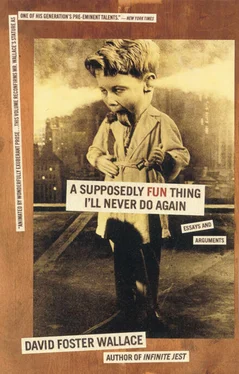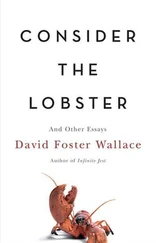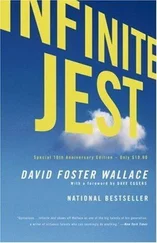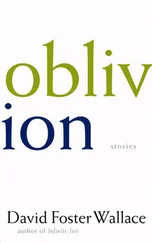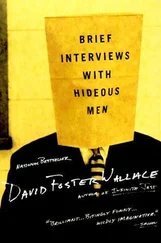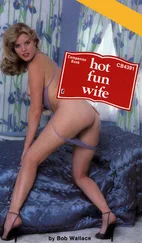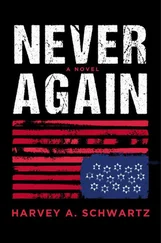No. Now I’ve found the worst one. It wasn’t even here yesterday. It must have been brought in special. It may not even be part of the carnival proper. It’s the SKY COASTER. The SKY COASTER stands regally aloof at the Hollow’s far western edge, just past the Uphill-Bowling-for-Dinnerware game, in a kind of grotto formed by Blomsness-Thebault trailers and dismantled machinery. At first all you can see is the very-yellow of some piece of heavy construction equipment, then after a second there’s some other, high-overhead stuff that from the east is just a tangle of Expressionist shadows against the setting sun. A small but steady stream of Fairgoers leads into the SKY COASTER grotto.
It’s a 175-foot construction crane, a BRH-200, one of the really big mothers, with a tank’s traction belts instead of wheels, a canary-yellow cab, and a long proboscis of black steel, 200 feet long, canted upward at maybe 70°. This is half of the SKY COASTER. The other half is a 100-foot + tower assembly of cross-hatched iron that’s been erected a couple hundred yards north of the crane. There’s a folding table in front of the clothesline cordoning off the crane, and there’s a line of people at the table. The woman taking their money is fiftyish and a compelling advertisement for sunscreen. Behind her on a vivid blue tarp are two meaty blond guys in SKY COASTER T-shirts helping the next customer strap himself into what looks like a combination straitjacket and utility belt, bristling with hooks and clips. It’s not yet entirely clear what’s going on. From here the noise of the Hollow behind is both deafening and muffled, like high tide behind a dike. My Media Guide, sweated into the shape of a buttock from my pocket, says: “If you thought bungee jumping was a thrill, wait until you soar high above the Fairgrounds on SKY COASTER. The rider is fastened securely into a full-body harness that hoists them [sic, hopefully] onto a tower and releases them to swing in a pendulum-like motion while taking in a spectacular view of the Fairgrounds below.” The hand-printed signs at the folding table are more telling: “$40.00. AMEX Visa MC. NO REFUNDS. NO STOPPING HALF WAY UP. “ The two guys are leading the customer up the stairs of a construction platform maybe ten feet high. One guy’s at each elbow, and I realize they’re helping hold the customer up. Who would pay $40.00 for an experience you have to be held up even to walk toward? Why pay money to cause something to occur you will be grateful to survive? I simply do not get it. Plus there’s also something slightly off about this customer, odd. For one thing, he’s wearing tinted aviator glasses. No one in the rural Midwest wears aviator glasses, tinted or otherwise. Then I see what it really is. He’s wearing $400 Banfi loafers. Without socks. This guy, now lying prone on the platform below the crane, is from the East Coast . He’s a ringer . I almost want to shout it. A woman’s on the blue tarp, already in harness, rubber-kneed, waiting her turn. A steel cable descends from the tip of the crane’s proboscis, on its end a fist-sized clip. Another cable leads from the crane’s cab along the ground to the tower, up through ring-tipped pitons all up the tower’s side, and over a pulley right at the top, another big clip on the end. One of the blond guys waves the tower’s cable down and brings it over to the platform. Both the crane’s and tower’s cables’ clips are attached to the back of the East-Coast man’s harness, fastened and locked. The man’s trying to look around behind him to see what-all’s attached to him as the two big blonds leave the platform. Yet another blond man in the crane’s cab throws a lever, and the tower’s cable pulls tight in the grass and up the tower’s side and down. The crane’s cable stays slack as the man is lifted into the air by the tower’s cable. The harness covers his shorts and shirt, so he looks babe-naked as he rises. The one cable sings with tension as the East-Coaster is pulled slowly to the top of the tower. He’s still stomach-down, limbs wriggling. At a certain height he starts to look like livestock in a sling. You can tell he’s trying to swallow until his face gets too small to see. Finally he’s all the way up at the top of the tower, his ass against the cable’s pulley, trying not to writhe. I can barely take notes. They cruelly leave him up there awhile, slung, a smile of slack cable between him and the crane’s tip. The grotto’s crowd mutters and points, shading eyes against the red sun. One teenage boy describes the sight to another teenage boy as “Harsh.” I myself am constructing a mental list of the violations I would undergo before I’d let anyone haul me ass-first to a great height and swing me like high-altitude beef. One of the blond guys has a bullhorn and is playing to the crowd’s suspense, calling up to the slung East-Coaster: “Are. You. Ready.” The East-Coaster’s response-noises are more bovine than human. His tinted aviator glasses hang askew from just one ear; he doesn’t bother to fix them. I can see what’s going to happen. They’re going to throw a lever and detach the tower-cable’s clip, and the man in sockless Banfis will free-fall for what’ll seem forever, until the crane’s cable’s slack is taken up and the line takes his weight and goes tight behind him and swings him way out over the grounds to the south, his arc’s upward half almost as high as the tower was, and then he’ll fall all over again, back, and get caught and swung the other way, back and forth, the man prone at the arc’s trough and seeming to stand at either apex, swinging back and forth and erect and prone against a rare-meat sunset. And just as the crane’s cab’s blond reaches for his lever and the crowd mightily inhales, just then, I lose my nerve, in my very last moment at the Fair — I recall my childhood’s serial nightmare of being swung or whipped in an arc that threatens to come full circle — and I decline to be part of this, even as witness — and I find, again, in extremis, access to childhood’s other worst nightmare, the only sure way to obliterate all; and the sun and sky and plummeting Yuppie go out like a light.
1993
In the 1960s the poststructuralist metacritics came along and turned literary aesthetics on its head by rejecting assumptions their teachers had held as self-evident and making the whole business of interpreting texts way more complicated by fusing theories of creative discourse with hardcore positions in metaphysics. Whether you’re a fan of Barthes, Foucault, de Man, and Derrida or not, you at least have to credit them with this fertile miscegenation of criticism and philosophy: critical theory is now a bona fide area of study for young American philosophers interested in both Continental poetics and Anglo-American analytic practice. H. L. Hix is one of these young (judging by his author photo, about twelve) U.S. philosophers, and I’m pretty sure that his 1992 Morte d’ Author: An Autopsy is a Ph.D. dissertation that was more than good enough to see print as part of Temple University Press’s “The Arts and Their Philosophies” series.
One of the wickedly fun things about following literary theory in the 1990s is going to be watching young critics/philosophers now come along and attack their poststructuralist teachers by criticizing assumptions those teachers have held as self-evident. This is just what Professor Hix is doing with one of the true clarion-calls that marked the shift from New Criticism and structuralism to deconstruction, Roland Barthes’ 1968 announcement of “The Death of the Author.” Barthes’ seminal essay has prompted twenty-three years of vigorous interjournal debate among European theorists (pro-death) and U.S. philosophers (anti-death, mostly), a debate that Hix has impressively compiled and arranged between two covers, and a debate that he has, rather less impressively, sought to resolve by accusing all parties of not being nearly complicated enough in their understanding of the term “author” ’s in- and extensions.
Читать дальше
